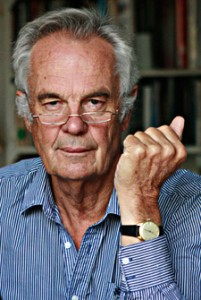What drives religious extremism?
By Jonathan Power
What drives people to extremes? Why do the people behind Al-Qaeda or the Islamic State (IS) get so charged up and angry?
Perhaps to understand we should go back to the 16th century in Europe and the furious debate about the “divine right of kings”. For decades the royal houses of Europe had been becoming less accessible to their subjects. William of Orange, ruler of the powerful Netherlands, said he had “received his power from God and God alone.”
Philip II of Spain was also a principle protagonist of this theme. Indeed, when Spain conquered Holland, Philip tried to squash the new Protestant “heresy”, using the brutal practices of the Spanish Inquisition.
It is no wonder that the Dutch were ready for a bloody revolt. They would no longer accept the prerogatives of rulers who claimed a “divine right”.
In 1581 the Dutch withdrew their allegiance from Philip II. Accountability of a ruler to his subjects not to his God was the new dispensation.
Meanwhile, England, under the rule of Elizabeth 1 and James 1, continued to believe in the divine right of the monarch. Only when James’s son came to the throne, Charles 1, was the belief overturned. Parliament raised an army. Seven years of war was followed by the king’s trial, conviction and execution in 1649.
The poet John Milton wrote at the time, “All men naturally were born free”. John Locke wrote 40 years later that “The very objective of government is setting up a known authority to which everyone of that society may appeal upon any injury received…The legislative power should be placed in collective bodies of men, call them senate, parliament, or what you please”.
From then on, over the course of two centuries, very much influenced by Locke and other Enlightenment thinkers, a constitutional form of government was slowly built across much of Europe. However, it was the United States that first became a full democracy, with separation of church and state.
But, despite the great advance from the days of “divine rule”, parliaments and governments regularly failed the people. Parliaments were often dominated, or at least greatly influenced, by those with inherited titles, people with money, the army and even criminal gangs.
Much of the struggle against the divine right of kings and the corrupt policies of the Pope in Rome had led Martin Luther in 1517 to nail his handbill to the doors of a church in Wittenberg in Germany. Faith in God, not in pope or king, was the only way to gain heavenly salvation, he preached. No wonder that Philip II savagely repressed the profession and declarations of Protestant faith in Holland.
It was in Holland that some Protestants became extremists. In the late 1560s Protestant iconoclasts went into the catholic churches and destroyed the statues of Mary and the saints. They also destroyed any manifestation of the wealth and riches that the church had been extorting for so long.
Their anger was such that we would call them today “violent, religious extremists”.
Sarah Chayes points out in her excellent new book “Thieves of State”, “We can see parallels between the 16th century struggles in Europe against the kings and Catholic Church and the religious militancy of Al Qaeda and IS. The resemblance between the language used to explain their violence and that of the earlier Protestant insurrectionists castigating the acute corruption of the Catholic Church and its royalist allies (with their belief in the divine right of kings) is unmistakable.”
Jonathan Power
jonatpower@aol.com
